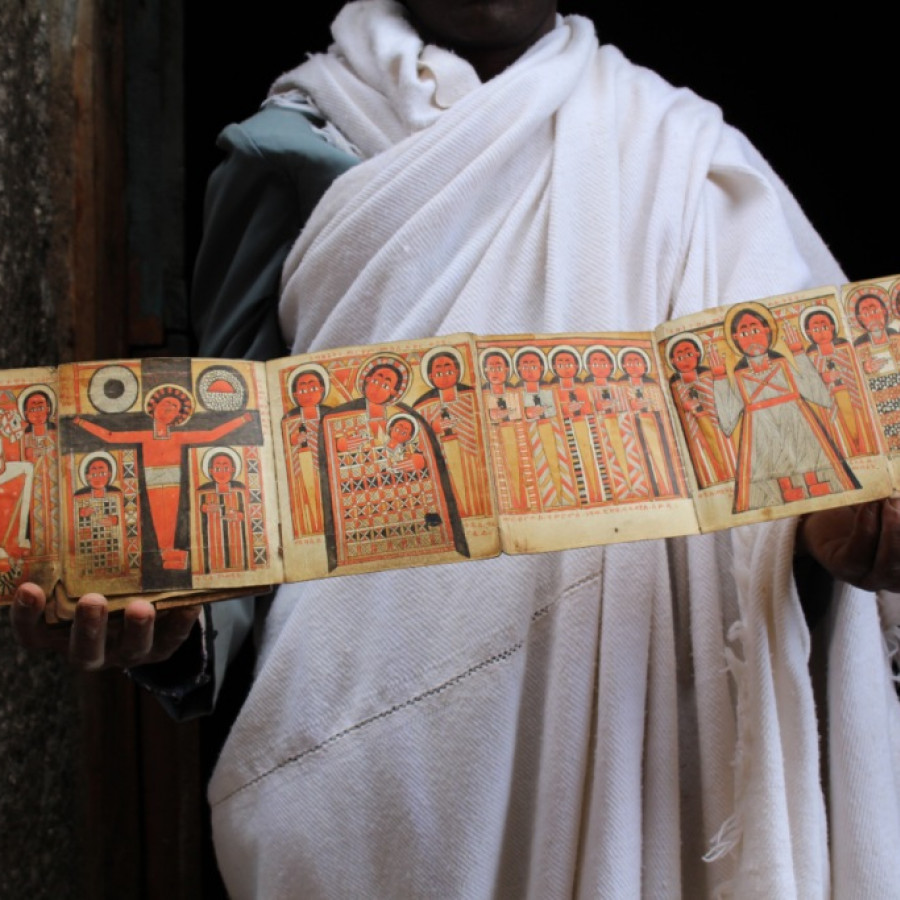About Ethiopia

Environment & Landscape
Ethiopia is an elevated central plateau varying in height between 2000m.a.s.l and more 4000m.a.s.l.
In the north and center of the country there are over 20 peaks rising over 4000m, and is often called the Roof of Africa. The most famous Ethiopian river is the Blue Nile (known as the Abay in Amharic), which flows over 1450km from its source at Lake Tana to Khartoum (Sudan) where it joins the White Nile and flows north toward the Mediterranean. Ethiopia is ecologically rich, ranging from the deserts in the east to the tropical forests in the south to extensive Afro-alpine in the highlands throughout.
Ethiopia has 31 endemic species of mammals, notably the Gelada Baboon, the Walia Ibex and the Ethiopian Wolf (or Simien fox). The wide range of altitude has given the country a variety of ecologically distinct areas; this has helped to encourage the evolution of endemic species in ecological isolation.
Ethiopia is a global center of avian diversity and top birding destination. More than 856 bird species have been recorded in Ethiopia, 20 of which are endemic to the country.
Climate & Seasons
Ethiopia's climate is as varied as its geography. The highlands offer temperate conditions and fertile lands, while lowlands like the Danakil Depression sizzle with extreme heat. The Rift Valley combines elements of both, with unique ecosystems surrounding its picturesque lakes.
Seasonal rains shape the nation, with a long rainy season from June to September, a shorter one from February to April, and a dry season from October to May. These weather patterns influence Ethiopia's biodiversity and cultural heritage, making it a captivating destination for all who explore its diverse climate.

Economy
While Ethiopia’s urban population continues to rise; the majority of the population continues to earn their living from subsistence farming.
Agriculture is the backbone of the national economy and the principal exports from this sector are coffee, oil seeds, honey, khat, flowers, and sugar. There is also a thriving livestock sector.
Most poor families share their sleeping quarters with livestock, and children sleep on the floor, where nighttime temperatures drop considerably for those living 2000 meters above sea level.
The average family size is six or seven, living in a 30-square-meter mud and thatch hut, with less than two hectares of land to cultivate.
Since the landholdings are small, farmers cannot allow the land to lie fallow, which reduces soil fertility, reducing fodder production for livestock, which in turn causes low milk yields. Since the community burns livestock manure as fuel, rather than plowing the nutrients back into the land, crop yields suffer. Low productivity leads to reduced incomes for farmers, hunger, malnutrition and disease. The cycle of poverty is complicated.
Ethiopia is often referred to as the “water tower” of Eastern Africa because of the 14 major rivers that pour off the high tableland, including the Nile, and the has the greatest water reserves in Africa, but few irrigation systems in place to use it. Just 1% is used for power production and 1.5% for irrigation. This however is set to change as a number of hydroelectric projects are underway, most notably the Renaissance Dam on the Nile.


Culture & Religion
Ethiopia is a multi-ethnic state of more than 90 million inhabitants at present and a great variety of customs and languages. Amharic is the unifying language, and country-wide Ethiopians speak 83 languages and over 200 dialects.
An estimated 60% of the population practice Christianity, the majority of which practice the homegrown, Ethiopian Orthodox Christianity.
This religion goes back nearly 2000 years to the 4th Century when King Ezana of the Axumite Empire recognized Christianity as the State’s official religion. Historically, the Ethiopia Orthodox Church was part of the Egyptian Coptic Church until 1959, today the church is headed by Ethiopian Patriarch, Abune Mathias.
Some 30% of the population practices Islam and are scattered throughout the country.
Sunnis form the majority of Muslims with non-denominational Muslims being the second largest group of Muslims, followed by Shias. Sunnis are largely Salafis, a more mystical side of Islam in which holy sites and shrines are created and used for worship. The village of Negash, in Northern Ethiopia, is known as the earliest Muslim settlement in Africa, dating back to the 7th century, and the beautifully complicated town of Harar is oft considered the fourth holy city of Islam.
A small ancient group of Jews, the Beta Israel, live in northwestern Ethiopia, though most emigrated to Israel in the last decades of the 20th century as part of the Israeli government’s rescue missions:
Operation Moses and Operation Solomon. A minority of Ethiopians belong to animist tribes who practice religions linked to their tribes.

